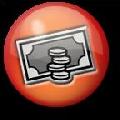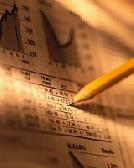
 |
|
| Financial Terms | |
| Product cycle |
|
Information about financial, finance, business, accounting, payroll, inventory, investment, money, inventory control, stock trading, financial advisor, tax advisor, credit.
Main Page: money, inventory, inventory control, investment, financial advisor, payroll, financial, stock trading, |
Definition of Product cycle
Product cycleThe time it takes to bring new and/or improved products to market.
Related Terms:product life cyclea model depicting the stages through Business cycleRepetitive cycles of economic expansion and recession. Cash conversion cycleThe length of time between a firm's purchase of inventory and the receipt of cash Cash cycleIn general, the time between cash disbursement and cash collection. In net working capital Expiration cycleAn expiration cycle relates to the dates on which options on a particular security expire. A Gross domestic product (GDP)The market value of goods and services produced over time including the Gross national product (GNP)Measures and economy's total income. It is equal to GDP plus the income  Investment product line (IPML)The line of required returns for investment projects as a function of beta Market cycleThe period between the 2 latest highs or lows of the S&P 500, showing net performance of a Operating cycleThe average time intervening between the acquisition of materials or services and the final Product riskA type of mortgage-pipeline risk that occurs when a lender has an unusual loan in production or Production payment financingA method of nonrecourse asset-based financing in which a specified Production-flow commitmentAn agreement by the loan purchaser to allow the monthly loan quota to be Replacement cycleThe frequency with which an asset is replaced by an equivalent asset. UNITS OF PRODUCTIONA depreciation method that relates a machine’s depreciation to the number of units it makes each Budget cycleThe annual period over which budgets are prepared.  Lifecycle costingAn approach to costing that estimates and accumulates the costs of a product/service over Non-production overheadA general term referring to period costs, such as selling, administration and financial expenses. Product costThe cost of goods or services produced. Product marketA business’s investment in technology, people and materials in order to make, buy and sell products or services to customers. Product/service mixSee sales mix. Production overheadA general term referring to indirect costs. product costThis is a key factor in the profit model of a business. product by-productan incidental output of a joint process; it is salable, cost of production reporta process costing document that cycle timethe time between the placement of an order to economic production run (EPR)an estimate of the number  equivalent units of production (EUP)an approximation of the number of whole units of output that could have been grade (of product or service)the addition or removal of product life cycle costingthe accumulation of costs for activities that manufacturing cycle efficiency (MCE)a ratio resulting from dividing the actual production time by total lead time; process productivitythe total units produced during a period product complexityan assessment about the number of components in a product product contribution marginthe difference between selling price and variable cost of goods sold product costa cost associated with making or acquiring inventory productive capacitythe number of total units that could be product- (or process-) level costa cost that is caused by the development, production, or acquisition of specific products or services product line marginsee segment margin product varietythe number of different types of products By-productA product that is an ancillary part of the primary production process, having Joint productA product that has the highest sales value from among a group of products Product costThe total of all costs assigned to a product, typically including direct Production yield varianceThe difference between the actual and budgeted proportions cash conversion cyclePeriod between firm’s payment for materials Aggregate Production FunctionAn equation determining aggregate output as a function of aggregate inputs such as labor and capital. Business CycleFluctuations of GDP around its long-run trend, consisting of recession, trough, expansion, and peak. Factor of ProductionA resource used to produce a good or service. The main macroeconomic factors of production are capital and labor. Gross Domestic ProductTotal output of final goods and services produced within a country during a year. Gross National ProductTotal output of final goods and services produced by a country's citizens during a year. National Income and Product AccountsThe national accounting system that records economic activity such as GDP and related measures. Net Domestic ProductGDP minus depreciation. Net National ProductGNP minus depreciation. Political Business CycleA business cycle caused by policies undertaken to help a government be re-elected. ProductivityOutput per unit of input, usually measured as output per hour of labor. Real Business Cycle TheoryBelief that business cycles arise from real shocks to the economy, such as technology advances and natural resource discoveries, and have little to do with monetary policy. Payroll CycleThe period of service for which a company compensates its employees. Sales Revenue Revenue recognized from the sales of products as opposed to the provision ofservices. By-productA material created incidental to a production process, which can be Cycle countingThe frequent, scheduled counting of a subset of all inventories, Lean productionThe technique of stripping all non-value-added activities from Process flow productionA production configuration in which products are continually ProductAny item intended for sale. Cash CycleThe length of time between a purchase of materials and collection of accounts receivable generated by the sale of the products made from the materials. Horizontal mergerA merger involving two or more firms in the same industry that are both at the same Price riskThe risk that the value of a security (or a portfolio) will decline in the future. Or, a type of Vertical mergerA merger in which one firm acquires another firm that is in the same industry but at another KaizenA method of costing that involves making continual, incremental improvements to the build missiona mission of increasing market share, even at harvest missiona mission that attempts to maximize shortterm Related to : financial, finance, business, accounting, payroll, inventory, investment, money, inventory control, stock trading, financial advisor, tax advisor, credit. |